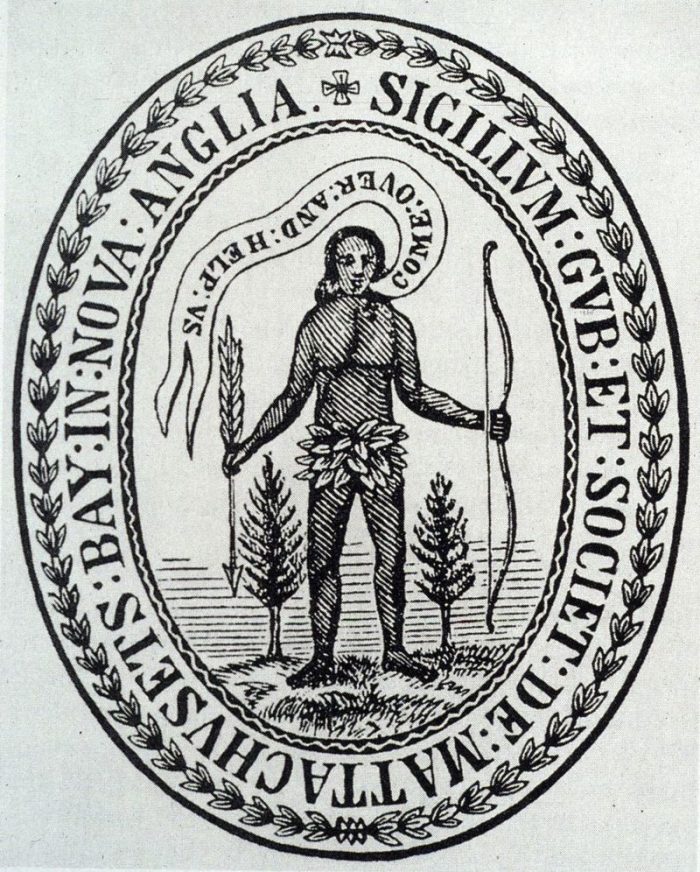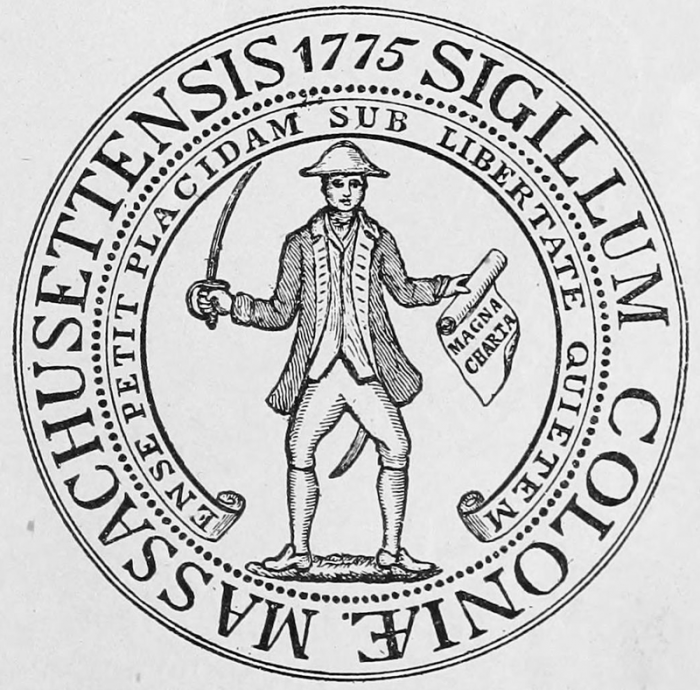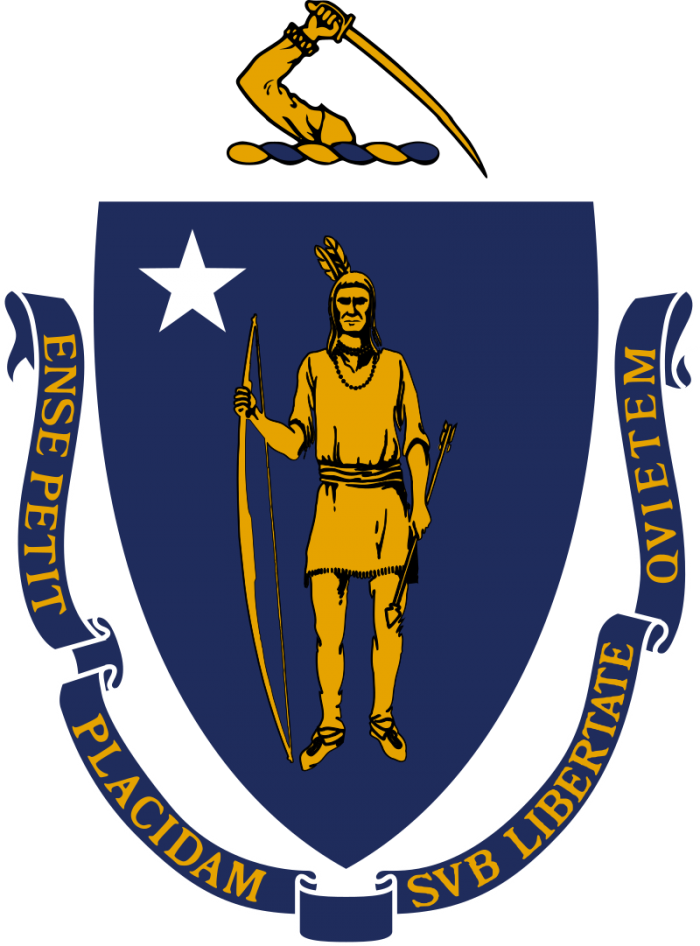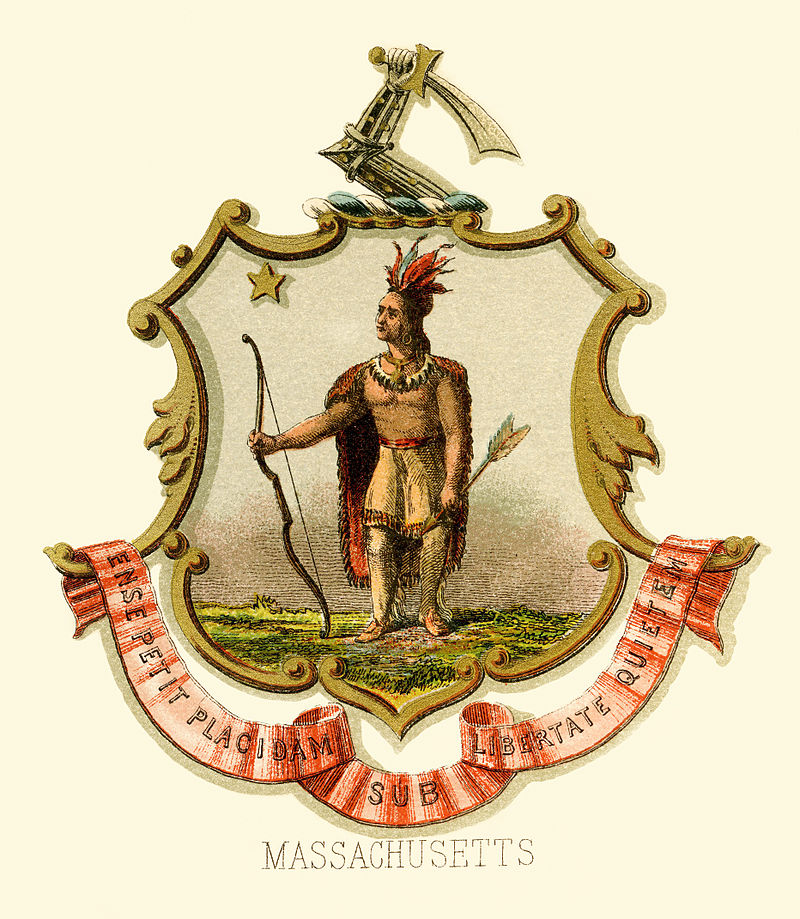Symbols are important. Symbols tell a story of people, places, and things. When one looks up, at the stars and stripes hanging from the pole or fluttering in the wind, the history of the United States come to mind and all that she has endured. Monuments on battlefields or in the public square tell a story or should tell a story of the history of the people living in that community, honestly and without hiding any of that history. Symbols matter but, symbols can also be misinterpreted if only looked at on the surface.
I am not surprised that the Great Seal of Commonwealth has come under intense scrutiny in these turbulent times in which we live. As depicted, the Seal has as its centerpiece an American Indian* holding a bow in one hand and an arrow in the other. The Indian has been central to the Great Seal off and on since the inception of the Massachusetts Bay Colony in 1629.
What is surprising is in every legislative session since 1984, bills have been introduced in the Great and General Court of the Commonwealth to redesign the Great Seal and the Flag of the Commonwealth. The latest attempt came on July 29th when the Massachusetts State Senate unanimously approved a bill to create a commission to study a redesign of the historic Seal. The bill still needs the approval of the House of Representatives before the commission would be created.
Although I understand the feeling behind the desire to redesign the Seal and flag, I do not feel a redesign is warranted. I think that more and better education behind the history and symbolism of these symbols is needed. Some symbols do need to be changed, like the use of Confederate symbols in state flags as no amount of education can explain away the hatred behind such symbols. But a better understanding of the symbols can help.

As previously mentioned, the first Seal was approved by the Charter, establishing the Massachusetts Bay Colony issued by King Charles I in 1629. The original Seal had at its center and American Indian, holding a bow and arrow with the motto, “Come over and help us.” This motto signified the missionary and commercial intentions of the original colonists. The arrow the Indian is holding is pointing down, not as a sign of subjugation but an indication of peace. This Seal was in use until the Charter was annulled in 1689 and then again from 1689-1692.

It is important to note that on July 28, 1775, the Seal was revised, and the American Indian was replaced with an English-American man holding a copy of the Magna Carta. The Seal was again changed in 1780 when the American Indian was returned to the center of the Seal.
According to records held by the Secretary of the Commonwealth, The American Indian was chosen to be the central figure for no other reason than he is symbolic of America. The “English-American man” was considered “too English,” and the State Legislature wanted something that was more American as part of the new Seal.
“Karen Kurczynski, a professor of art history and architecture at the University of Massachusetts Amherst, said the seal was originally meant to suggest peace with the colonial-era symbol of a Native American whose arrow is pointing down.”

“Seen from today’s point of view, the arrow pointing down could suggest submission and subjection to colonial domination as much as peace, given a clearer look at what happened in American history,” Kurczynski said. (Merzback 2019)
But the depiction of the American Indian on the Seal is not the only point that has drawn criticism. The motto of the Commonwealth and the bent arm holding the broadsword has come into the crosshairs of critics.
Surrounding the shield depicting the American Indian is a blue ribbon. This ribbon signifies the Blue Hills of Quincy, Canton, and Milton with the motto in Latin “Ense petit placidam sub libertate quietem.” This motto was written about 1659 by the English Patriot Algernon Sydney. The literal translation of the Latin is: “With a sword, she seeks quiet peace under liberty.” The more commonly used text is the looser translation of “By the sword we seek peace, but peace only under liberty.” The motto was adopted by the Congress of the Province in 1775 and is still in use today.
Critics point to the warlike theme of “with a sword” but again totally overlook the “quiet peace under liberty” of the second part of the motto. The United States came as the result of a bloody revolution that took place only after negotiations failed. The Continental Congress chose war as a last resort, but now, with Independence in their sight, only desired peace but peace secured through the liberty of all.
Perhaps the Seal’s most controversial element is the military symbol of the bent right arm holding the sword at the top. I always thought this looked the Cape Cod, but it goes deeper than that. The Arms of the Commonwealth, which make up a significant part of the Seal has as part of its heraldic description this text, “The crest shall be a wreath of blue and gold, whereon is a right arm, bent at the elbow, and clothed and ruffled, the hand grasping a broadsword, all of gold.”
The arm and sword are the “Military Symbol” and makes up the device used by the Join Forces Headquarters of the Massachusetts National Guard. The device is used on flags and the shoulder patch used by Soldiers and Airman assigned to duty with headquarters.
In a letter from the United States Army Institute of Heraldry dated 19 June 2015 the symbolism of the “arm, bent at the elbow” is an “ancient European heraldic symbol which is thought to represent the Arm of God” and was used to show the protection of God for those who used the symbol. According to the “History of the Arms,” the dress of the sleeve and the broad sword is a reminder that the freedom of the Commonwealth and the United States came about through Revolution.
“The bent arm with the sword, for example, was not intended to be threatening to Native Americans, or threatening to anyone, for that matter. It’s just a typical heraldic representation found on many coats of arms.” Jim Wald, a history professor at Hampshire College. (Merzback 2019)
As with anything in history, it is essential to understand the meaning behind the symbols used at the time of creation and how they will be interpreted in future generations. Any discussion of change should begin with a full understanding of the original intent behind the nature of the symbol, and then a study can be had about that change.
As I stated at the outset that my objection was not necessarily to the change but rather to the lack of education concerning the original intent of what the symbols implied; peace, justice, America, and all the rest. Although we cannot know for sure what was in the mind of every individual associated with the creation of the Great Seal of the Commonwealth, it would appear, at least historically, that the intent was to bring honor and not subjugation. Not everything needs to change.
*I am using the term “American Indian” in reference to “Indigenous People” as that is the term used in the historical documents cited.
Works Cited
Merzback, Scott (2019) Sign of the times: Rethinking the Massachusetts state seal in 2019. Retrieved 3 August 2020 https://www.gazettenet.com/Massachusetts-state-seal-and-flag-24107101
The History of the Arms and Great Seal of the Commonwealth of Massachusetts. Retrieved 3 August 2020 https://www.sec.state.ma.us/pre/presea/sealhis.htm
Department of the Army, Institute of Heraldry: MEMORANDUM FOR The Adjutant General’s Office, ATTN: Mr. Len Kondratiuk. June 19 2015.

